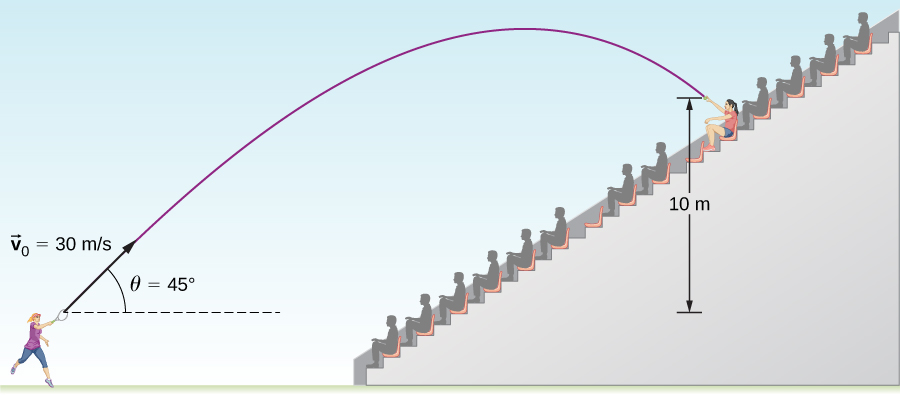| << Chapter < Page | Chapter >> Page > |
Check Your Understanding A rock is thrown horizontally off a cliff high with a velocity of 15.0 m/s. (a) Define the origin of the coordinate system. (b) Which equation describes the horizontal motion? (c) Which equations describe the vertical motion? (d) What is the rock’s velocity at the point of impact?
(a) Choose the top of the cliff where the rock is thrown from the origin of the coordinate system. Although it is arbitrary, we typically choose time t = 0 to correspond to the origin. (b) The equation that describes the horizontal motion is With this equation becomes (c) [link] through [link] and [link] describe the vertical motion, but since these equations simplify greatly to become and (d) We use the kinematic equations to find the x and y components of the velocity at the point of impact. Using and noting the point of impact is −100.0 m, we find the y component of the velocity at impact is We are given the x component, so we can calculate the total velocity at impact: v = 46.8 m/s and below the horizontal.

If we take the initial position to be zero, then the final position is y = 10 m. The initial vertical velocity is the vertical component of the initial velocity:
Substituting into [link] for y gives us
Rearranging terms gives a quadratic equation in t :
Use of the quadratic formula yields t = 3.79 s and t = 0.54 s. Since the ball is at a height of 10 m at two times during its trajectory—once on the way up and once on the way down—we take the longer solution for the time it takes the ball to reach the spectator:
The time for projectile motion is determined completely by the vertical motion. Thus, any projectile that has an initial vertical velocity of 21.2 m/s and lands 10.0 m below its starting altitude spends 3.79 s in the air.

Notification Switch
Would you like to follow the 'University physics volume 1' conversation and receive update notifications?